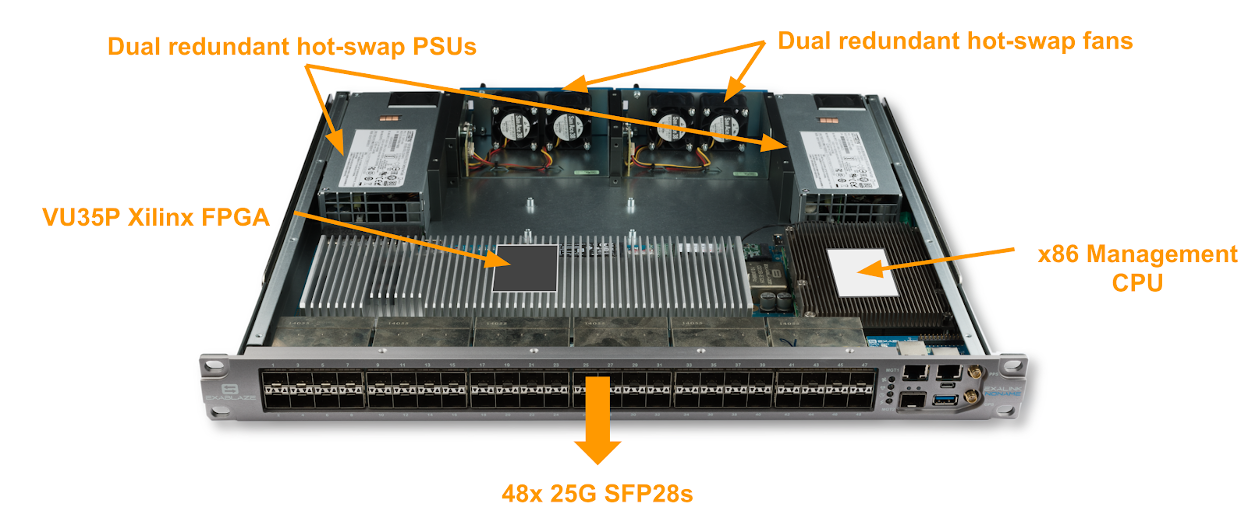- Welcome to the Cisco Nexus 3550T Programmable Switch Platform Documentation
-
- Command Line Interface
- Bash Shell
- System Clock
- AAA Configuration
- Configuration Management
- Automatic Configuration
- Configuring Interfaces
- Layer 2 Configuration
- Layer 3 Configuration
- Port Channel Configuration
- VRRP Configuration
- SNMP
- SPAN/Monitoring Configuration
- High Precision Timestamping
- Diagnostics
- System Logs
- Debug Dumps
- Statistics Logging
- FPGA Firmware Selection
- Known Issues
About the Cisco Nexus 3550-T Programmable Switch Platform
Introduction
The Cisco Nexus 3550-T Programmable Switch Platform is a powerful top-of-rack Ethernet switch and application platform with a unique low-latency design. It offers comprehensive layer 2 and layer 3 switching capabilities. The device is built around a flexible FPGA device, offering long term feature enhancements, upgrades, and fixes, as well as a complete firmware development environment for custom applications.

The Cisco Nexus 3550-T Programmable Switch Platform
Nexus 3550-T Hardware Platform Overview
The hardware platform specifications of the Nexus 3550-T are as follows:
- 1RU 48 port SFP28 (Small Form-factor Pluggable 28) configuration (backwards compatible with SFP+ and SFP).
- Dual redundant, hot-swap PSUs and dual hot-swap fans.
- Build using a Xilinx Virtex Ultrascale Plus VU35P Field Programmable Gate Array (FPGA) with a “-3” speed grade. The chip has 8GB of High Bandwidth Memory (HBM) on board.
- x86-based management processor with 10/100/1000M (RJ45) and 1G/10G (SFP+) based management ports.
- Hardware (electronics) supporting 25G speeds to the FPGA.
Cisco Nexus 3550-T Programmable Switch Platform System Architecture
The Nexus 3550-T architecture is centered around a dynamically reconfigurable layer Xilinx Virtex Ultrascale+ VU35P FPGA. There are forty-eight 25G capable SFP+ ports, and an x86 management CPU.

The Cisco Nexus 3550-T Programmable Switch Platform Architecture
The FPGA module can run host of multiple firmware personalities. Currently, the following firmware versions are available:
- 10G Layer 3 switch firmware: With this firmware, the device operates as a 48-port low latency Layer 3 switch.
- Custom firmware. With this firmware version you can generate custom images using the Firmware Development Kit (FDK).
Initial 10G Layer 3 Switch Features
- Standard management interfaces: SNMP / TACACS+ / Syslog / JSON-RPC API
- Layer 2 switching features: MAC learning, VLAN tagging/trunking, LLDP, IGMP & STP
- Layer 3 switching features: IP routing, BGP, OSPF, and PIM
- Layer 4 switching features: Static NAT/PAT
 Feedback
Feedback